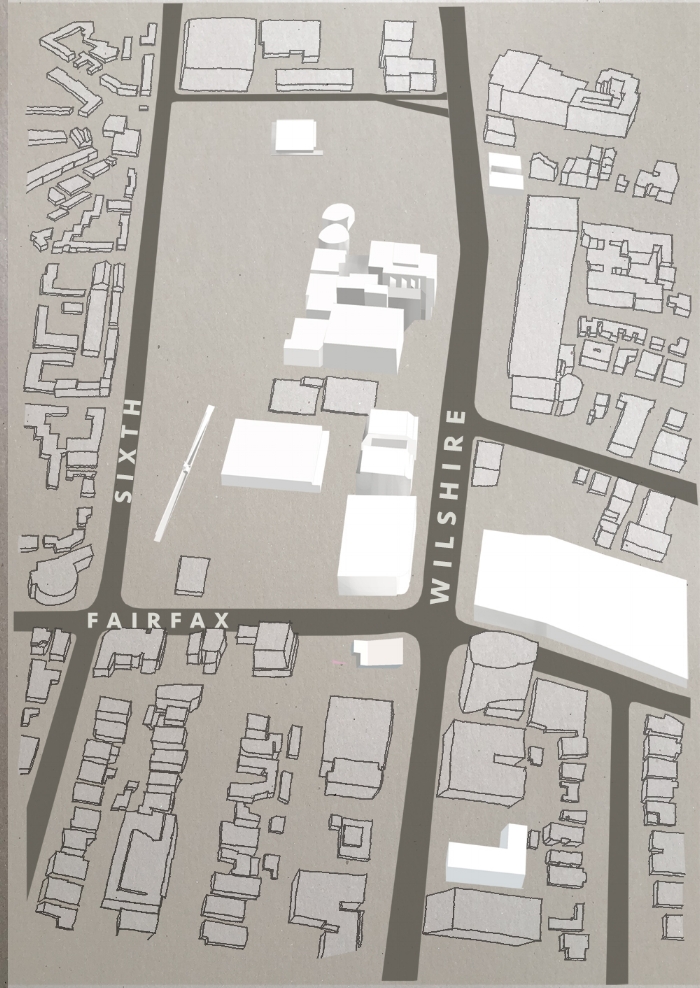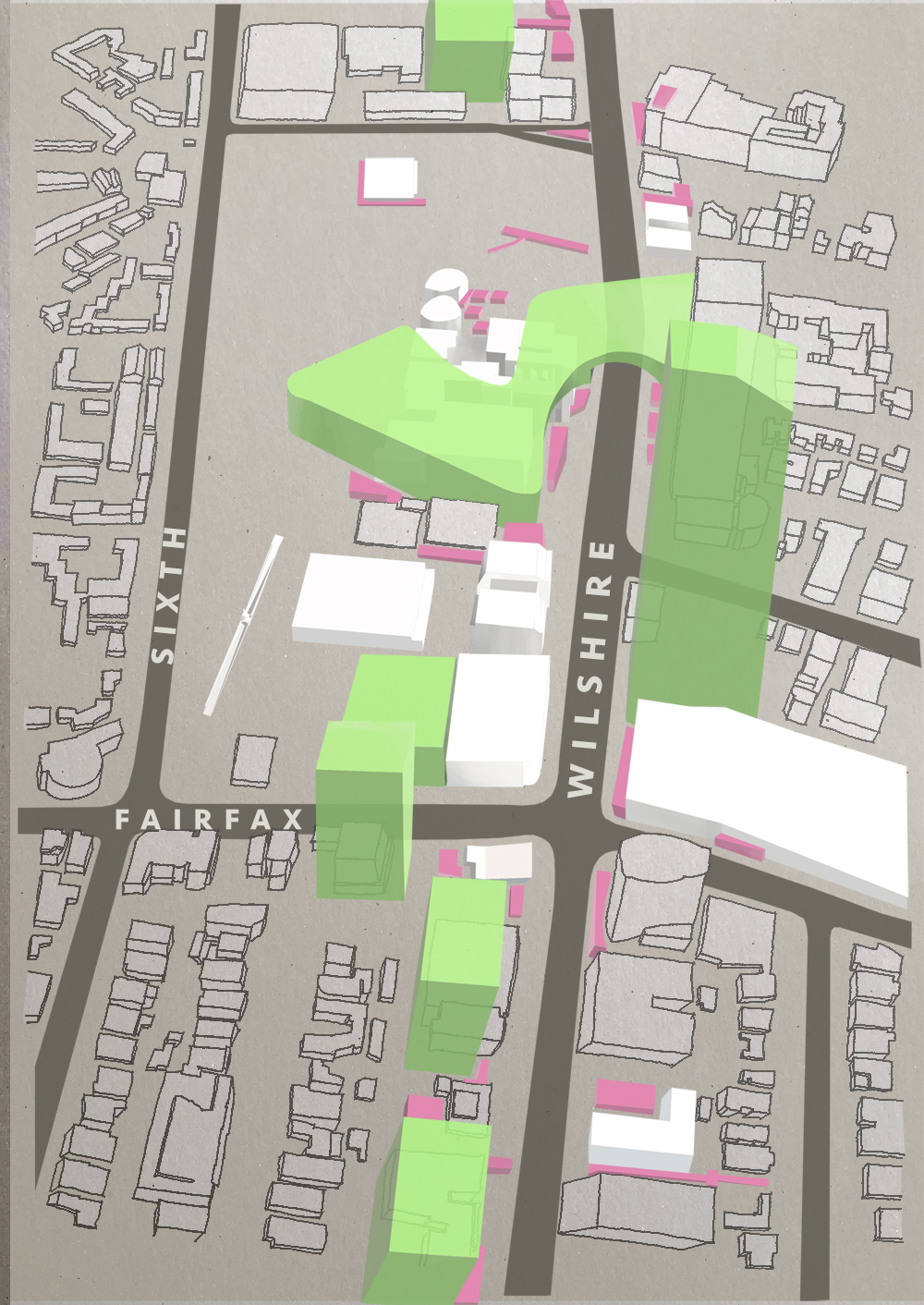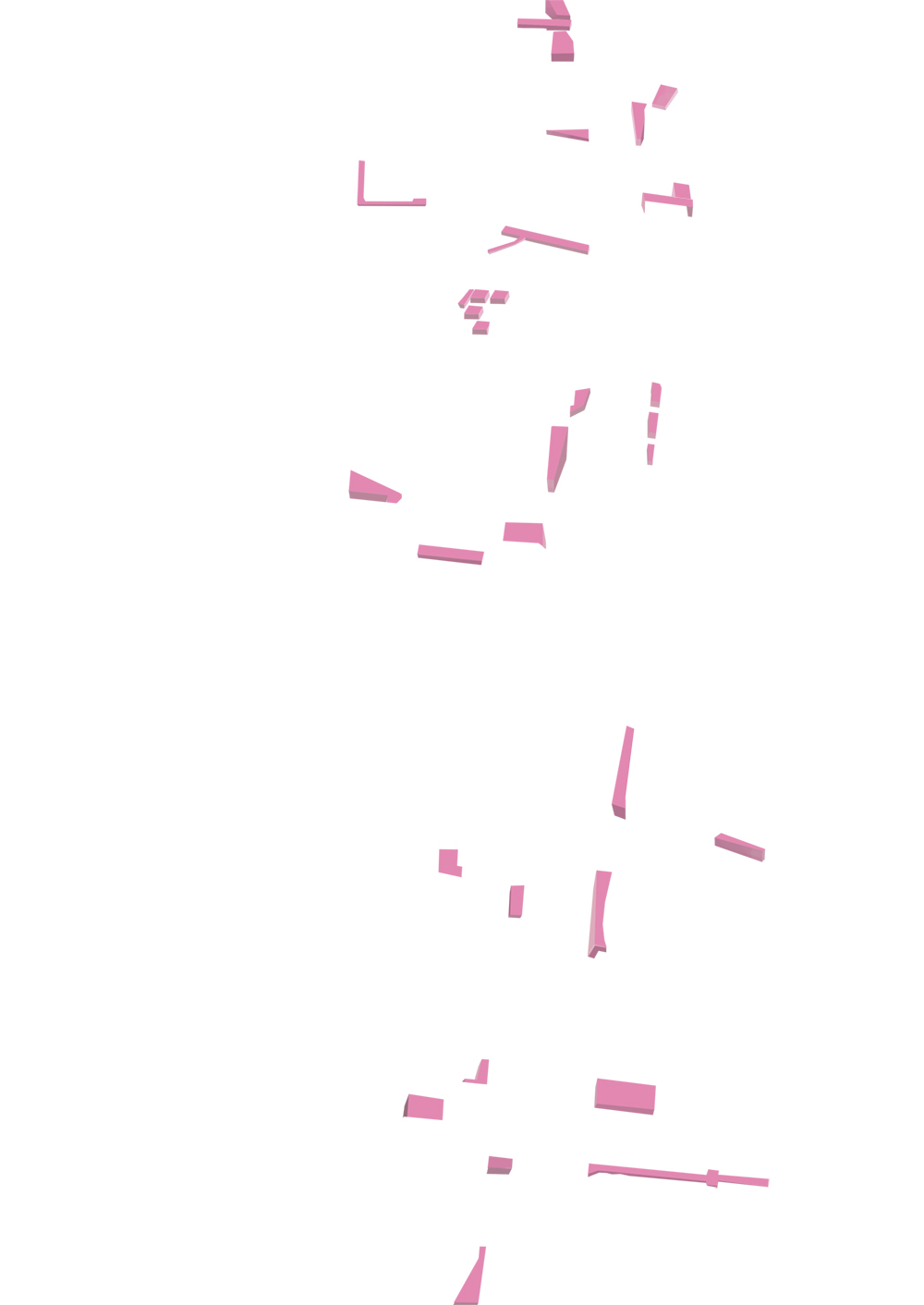museum row (XS, S, M, L, XL)
This research project asks whether a scalar adjustment is required when a neighborhood undergoes a maximizing lurch in the direction of the EXTRA LARGE.
Museum row, along Wilshire Boulevard in Los Angeles between Fairfax and LA Brea, is home to the Los Angeles County Museum of Art, The Petersen Automotive Museum, The Page Museum, The Craft and Folk Art Museum, as well as many other mid-to-small sized arts organizations and galleries.
Over the next 15 years, museum row area will undergo a transformation in scale with the arrival of a larger new LACMA campus and numerous office and residential towers along the Boulevard.
WGA asks if -- with the advent of a macro-scale adjustment in the neighborhood -- does there not also require a micro-scale adjustment too? WGA identified the tiny areas of museum row, and also identified other potential micro aggregations of these urban spaces for the purposes of small-scale gatherings, chance meetings, a shared cigarette or umbrella, a place to wait.
Drawing-in pedestrians from the metro stops, and accommodating spaces for public use, occupation and interventions along those paths or within the buildings themselves will be instrumental in adjusting ourselves away from the displacement of the auto-centricity of the area, and of the area's rapid urbanization. This already happens at Chris Burden's permanent installation "Urban Light" -- one of the most "Instagrammed" places in the city. One-off events like 2008's "Field Guide to LACMA" -- in which the local art group Machine Project arranged for 35 artists to stage 55 interventions in, around, and within the museum's un-used corners, main hallways and sidewalk areas -- re-discovered and re-programmed spaces around museum row for potential use and activity.
We feel that when a threshold or boundary point is denied, psychologically, the possibility of interchange is lost. Lost is the mystery of the in-between. Gone is the anticipation of separation from the city's continuous collective jam, the day’s-end move towards intimacy, or, on the other hand, the rollicking possibility of party and play. If we don’t see the doorway, we’ll never know what’s behind it. Without a threshold, life is lived in interminable jump cuts.
Read more here from Wendy Gilmartin's KCET article on the subject.
2018
.



